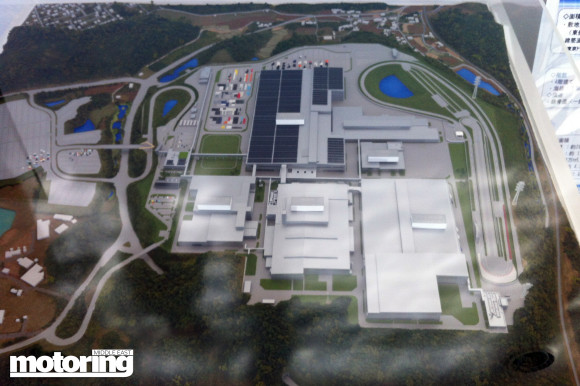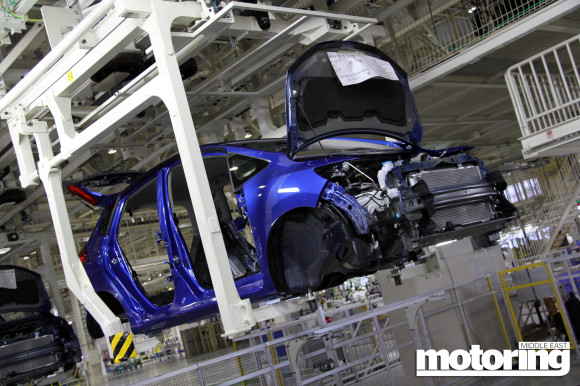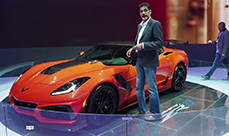Yorii, Honda’s newest factory in Japan
We get a quick tour of one of the most advanced car assembly plants yet
By Shahzad Sheikh
It’s eerily quiet. Pristine buildings, empty roads, zero activity across the near million-square-metre facility. Or at least that’s what you would think when first visiting Honda’s brand new Yorii plant in Saitama. You’d think it wasn’t yet in operation.
In fact it’s been fully functioning since April this year. It’s producing up to 1500 cars each working day (all Fits, or Jazz as we know it, for the time being). The plant can produce 250,000 cars a year and there are around 2500 people working here.
But where the heck are they? We’re in the section where they actually stamp the metal and put together the shell of the car – chassis, side frame, roof, fenders etc… And whilst there is an occasional clip-board wielding human to be seen, calming check stuff off, all the work, it appears, is being done by giant fully-dextrous swinging relentless robots.
I stood there for a good few minutes completely hypnotised by the perfectly synchronised and precise, but balletic and graceful movements of these android arms as they quietly, efficiently and incredibly quickly turn a few slabs of metal into a recognisable car structure.
At the other end of this line it was even more awe-inspiring as the roof and bodywork was precision welded on and out popped what was pretty much a recognisable car – one about every 30 seconds!
This then is the overriding impression you take away from this incredible facility, one of a high-tech world of full automation, gobbling up the earth’s precious resources and gushing out mass consumption transport at a terrifying rate – the humans merely there to service the robots. Makes you wonder who is slave to who here?
But that’s not quite the correct picture. Move to the other parts of the plant, where more involved assembly work is taking place, including the interiors and trims bits – although the engine, drivetrain and suspension is again autonomously added – and you’ll see some of those 2500 extremely young-looking people diligently going about their work. The human touch when it comes to quality control is still, thankfully, very much in evidence. Hence Honda, of course. If you know what I mean.
Additionally this is a plant that likes to give the impression of being at one with nature, not working against it. More than a quarter of that aforementioned million square metres are dedicated to a nature conservation area.
Every part of the car construction process has been pared down as much as possible to reduced wastage and inefficiency, from ensuring that components are delivered directly rather than to an intermediary holding depot, going for a 3-coat twice-bake paint procedure rather than 4-coat and thrice-bake, using less but cleverer robots per assembly process, using solar panels to reduce CO2 and provide 2.6MW of power – which is equivalent to that used by 459 households (okay Japanese households!) – and even establishing a biotope with lush green areas for rare natural wildlife to thrive and flourish.
All very socially aware and responsible, and it is a truly impressive facility, that is both thought-provoking as an example of frangible harmony between industry and environment, as it is awe-inspiring in its unerring efficiency and inevitability.
Trouble is the sci-fi fan in me is letting his imagination run wild, and all I foresee is a robot revolution taking place within the plant whilst the humans sleep unawares in their beds in the nearby towns. And instead of cars, those automated arms start producing terminators instead… Oo er!




